They represent well the different aspects of cultural development in the last 500 years, considering only two factors: popularity and influence.

Luís de Camões
Any study of Brazilian Art must begin with Luís de Camões (1525 - 1580), Portugal's national poet. Born in Lisbon to an impoverished noble family, he joined a military expedition to the Orient to seek fame and fortune, but returned penniless. While in Macau, off the coast of China, in a cave, he wrote the Lusíadas, the great Portuguese national epic (kind of like Shakespeare writing his plays in a hut in Afghanistan).
The development of all subsequent Portuguese (and Brazilian) literature can be traced to this work. Camões totally dominates all poetic currents of his time. He also wrote beautifully structured sonnets and lyric poems. Camões died in poverty and obscurity. A giant of his era, he has influenced writers in many languages, including the great English poets of the Elizabethan era (Browning's Sonnets from the Portuguese: "How do I love thee, let me count the ways").
The Shakespeare of Portugal, the Dante of lusitan culture, the Cervantes from Lisbon. All Portuguese language literature is indebted to Camões. He is the defining writer on all luso-Brazilian literary endeavors. Most memorable line (referring to the Portuguese language):
Última flor do lácio, inculta e bela
last flower of latin, unknown and beautiful.
Of course, Camões is not Brazilian, but Brazilian literature is Camões.
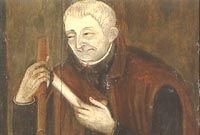
José de Anchieta
José de Anchieta (1534 - 1597), a Portuguese Jesuit priest, is considered to be the first writer of Brazilian themes. His writings reveal religious devotion and include religious plays, poems, descriptive prose, and the first Tupi Indian grammar. Anchieta is also known for founding the great city of Sao Paulo in 1554.
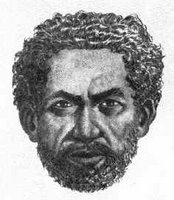
Aleijadinho ("Little Cripple")
From the beginning of the 17th century to the end of the colonial period, the baroque styles of Europe dominated the artistic life of both the Spanish and Portuguese colonies. Baroque architecture is represented in the large churches featuring the use of connecting oval interior spaces and contrasting concave and convex exterior walls. In Brazil, baroque art is most visible in the magnificent churches and the sculptural creations of Antonio Francisco Lisboa, known as Aleijadinho, meaning The Little Cripple.
He was said to have worked with paintbrush, hammer and chisel strapped to his hands, not being able to hold them with his fingers, because of disease. The most famous of Aleijadinho's work are the Sao Francisco de Assis church in Ouro Preto, brilliantly decorated with carvings in wood and soapstone, and the dramatic statues of the Twelve Prophets at Congonhas do Campo.
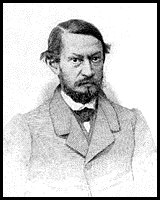
Antônio Gonçalves Dias
Antônio Gonçalves Dias (1823 - 1864) is regarded as Brazil's national poet, and his Song of Exile (1843), with its evocative first line:
Minha terra tem palmeira, onde canta o sabiá
"My land has palm trees, where the nightengale sings"
is Brazil's most famous poem. Educated in Portugal at the University of Coimbra, he wrote of love and of his country in Primeiros Cantos (First Songs, 1846), Segundos Cantos (Second Songs, 1848), and Últimos Cantos (Last Songs, 1851). He was returning to Brazil from Europe when he died in a shipwreck at the age of 41.
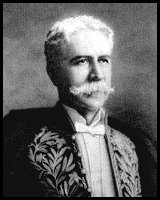
Joaquim Nabuco
Joaquim Nabuco de Araújo (1849 - 1910) a Brazilian writer and diplomat, was a leader in the fight to abolish slavery in Brazil. He helped secure a partial and gradual emancipation bill in 1871, founded the Brazilian Antislavery Society in 1880, and wrote extensively about slavery, which was finally abolished in Brazil in 1888. Joaquim Nabuco's importance derives from his use of literature as social conscience and political weapon, a mix of Sinclair Lewis and Harriet Bleecher. His works have none of the beauty and poetic precision of those of Gonçalves Dias.

Castro Alves
Castro Alves (1847 - 1871) addressed many of the same themes as Joaquim Nabuco, but much more poeticallly. There has never been a greater literary assult on the evils of slavery than Navio Negreiro (Black Slave Ship):
Senhor Deus dos desgracados
Dizei-me vos, Senhor Deus
Se e' loucura ... se e' verdade
Tanto horror perante os céus.
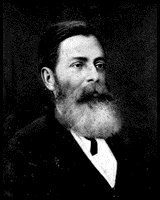
José de Alencar
José de Alencar (1829 - 1877) and Machado de Assis (1839 - 1908) are two romantic era novelists, known for their romantic, brazilian themes. They both deal with the common aspects of everyday life of the common people. Alencar is more of a naturalist, focusing on the purity of native society, uncorrupted by civilization. Assis, on the other hand, uses urban themes to paint a very pessimistic picture of life.

Mário de Andrade
Mário de Andrade (1893 - 1945) was a leading cultural figure in the modernist movement in Brazil and the central figure in 1922 Week of Modern Art movement, the beginning point of all modern art in Brazil. Because of his influence on all modern art, Andrade is an easy choice for this list. His works are difficult and obscure, but mark a break from the romanticism and classical tradition followed by all writers until the early 20th century. His dynamic leadership and his enormous influence led Andrade to be called the "Pope of Modernism."
His book of poetry, Hallucinated City, can be considered a manifesto of a literary trend toward popularizing art. Macunaíma (1928) is his best known work, and is considered by critics to be a masterpiece that defines the soul of the Brazilian people. To most foreigners, Macunaíma is indecipherable, a complete mystery. It has been made into a movie that is more confusing than the book. I would like to here from someone about this.

Gilberto Freyre
Gilberto Freyre (1900 - 1987) pioneered sociological studies in his native Brazil. His most famous work, The Masters and the Slaves examined the relationships of Brazil's Portuguese colonizers and their African slaves. It inspired other investigations of African contributions to Brazilian society. Also well known among his 120 books is The Mansions and the Shanties (1936) which examines the rise of urbanization in 19th-century Brazil and the decline of the rural social structure. Freyre represents the social sciences in Brazilian literary tradition, but has been much criticized in the last twenty years for his naive view of racism in Brazil.
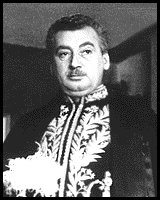
Jorge Amado
Jorge Amado (1912 - ?) is Brazil's best known story teller and the most popular writer in Brazil. His novels portray common people and their everyday problems. Amado depicts life in his native state of Bahia at the beginning of the century, when wealthy cacao planters dominated the land, as in Gabriela, Clove, and Cinnamon (1958). How many American writers would focus on a Turk storekeeper named Nacib and a maid, as in Gabriela? In Dona Flor and Her Two Husbands (1966) his characters gain greater individuality.
Amado is said to demonstrate in his works a genuine sympathy for the humble and the socially downtrodden, unless these downtrodden happen to live in a Communist country, in which case they can be murdered by the millions without a peep from Mr. Amado. The only small thing I have against Amado is the picture of him hugging Joseph Stalin, taken in the early 50s. Obviously, Jorge Amado's sympathy for the downtrodden does not extend to the 20-30 million murdered by his communist friend and hero.

Érico Veríssimo
Érico Veríssimo (1905 - 1975) was one of the great Brazilian novelists of the 20th century. He is best known for his works about his native state Rio Grande do Sul (the trilogy: Time and the Wind, comprising The Continent, The Portrait, and The Archipelago). He also wrote short stories, criticism, children's books, and travel essays, including an account of life in the United States, from 1941.
Veríssimo is in a class by himself, not only because of his literary production, but also for his ability to explain Brazilian writing. His 1945 book, Brazilian Literature, is one of the best general resources for those interested in the topic. He is able to explain in simple language how and why things happened.

Carlos Drummond de Andrade
Carlos Drummond de Andrade (1902 - 1987) can be considered Brazil's greatest modern writer. His many literary works focus on the individual and the banality of modern life. His poetry is short and simple, thrusting like a knife into the soul:
E agora, José?
A festa acabou,
A luz apagou,
o povo sumiu,
a noite esfriou,
e agora, José?
e agora, você?
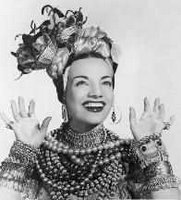
Carmen Miranda
Carmen is another artist that must be put on a list such as this. Born in Portugal, she embodies the spirit of Brazil in the 1930s and 40s. It is more than just the movies, the music and the dances. The only way to compare Carmen to any American artist would be to put Mae West, Judy Garland and Betty Gable into one body. Going to Hollywood was her biggest triumph and tragedy. She went to the US with nothing but her talent, made it big, and returned in a coffin a dozen years later. I only wish she had not been so stereotyped in her pictures, and that the "Brazilian" scenes had not been filmed with so many Mexican style backgrounds and costumes.
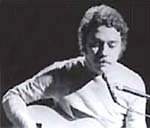
Chico Buarque and
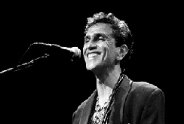
Caetano Veloso
These two could be listed separately, or together. Nobody else represents contemporary MPB (Popular Brazilian Music) like these guys. They have music and feeling. The lyrics are as good as the music. Their influence is greater than any other living song writers. Sent into exile by the Military regime in the 70s, they were a voice of hope to millions wanting a democratic nation. Like Jorge Amado, Chico thinks a person doesn't count if killed or persecuted by his Communist buddies.
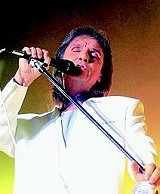
Roberto Carlos
The last of the great romantics. His popularity is unmatched in all groups and ages of society. Not a great voice, but for 30 some years he was defined "romantic" music in Brazil. He is one of those few people crowned with the "Rei" title, along with other "kings" such as Pelé and Luiz Gonzaga. His name is rarely mentioned when talking about MPB (Popular Brazilian Music), which is for some reason usually associated with Chico, Caetano, Gil, Milton, etc...
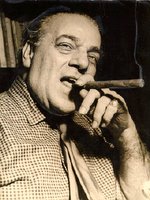
Heitor Villa-Lobos
Villa-lobos was Brazil's most famous composer. His formal musical training was scanty, but he traveled widely through Brazil, absorbing folklore and popular music. Befriended by the pianist Arthur Rubinstein, who played his music in the United States and Europe, Villa-Lobos was able to spend the years from 1923 to 1930 in Europe, living primarily in Paris. A prolific composer, his best-known works are the 9 Bachianas Brasileiras (1930-45) and the 14 Choros (1920-28), written for a wide range of performance media, from solo guitar to full orchestra, band, and chorus. All are strongly imbued with Brazilian color.
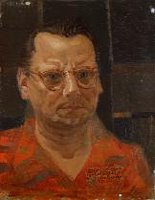
Cândido Portinari
Portinari (1903 - 1962) is the most widely recognized of Brazil's painters. He introduced many of the ideas and trends of modern painting in Brazil. After studying art in Rio de Janeiro he traveled (1928) to Europe. Returning to his native country, he dedicated his art to the depiction of Brazilian life in a modern yet distinctly Brazilian manner, often emphasizing gauchos (cowboys) and city workers. His early (1930s) paintings of men and women show Picasso's influence. Portinari is well known for his many murals, including the works War and Peace presented (1955) to the United Nations building in New York City.
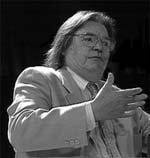
Antônio Carlos Jobim
If this list were in order of importance and talent, Jobim would have been up on top with Carmen. Nobody did music like Jobim. He had the rare ability to find the right words and put them to the right tune.
More information at:
http://www.brazilbrazil.com/literary.html
http://www.academia.org.br/
Sites about MPB:
http://www.cifrantiga.hpg.ig.com.br/
http://www.mpbnet.com.br/index.html



















Comentários
Gostei bastante do teu blog, vou passar por aqui mais vezes. (: